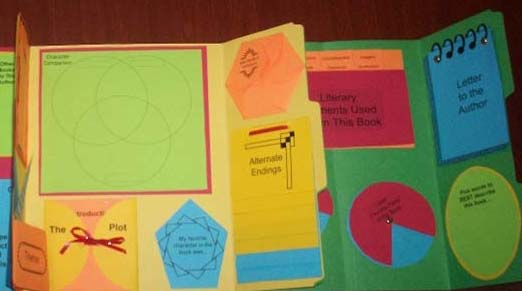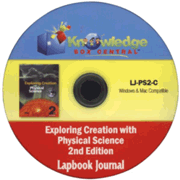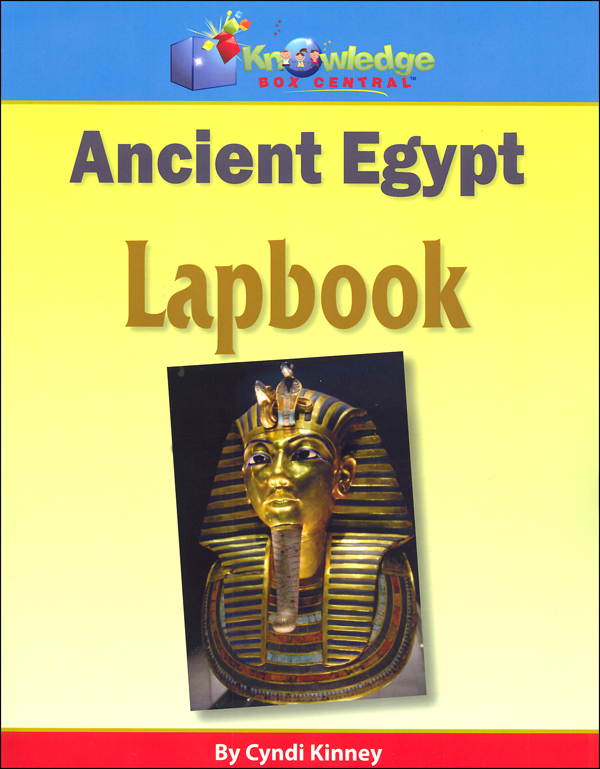Lapbooks offer hands-on, creative approaches for researching and recording information, creating study tools, and summarizing or illustrating what a student has learned. In short, lapbooks are a tool for organizing and presenting learning on a particular topic. These are especially useful with unit studies, but they will also work with other educational approaches.
Lapbooks are constructed from three, colored file folders that are cut, folded, and glued to create a single, complex folder. Smaller "booklets" are created and attached within it. (See the illustration to the right.) Knowledge Box Central provides the instructions, templates for the booklets, questions or directions for the student for each booklet. The small booklets are where the creativity shines. It's hard to find two alike from lapbook to lapbook. They fold like accordions, have inserts, twirl around brads like spinners, or have multiple layers--the permutations are endless.
As you can tell from the photo above, these are relatively complex projects that take a bit of time to put together, before students even begin to enter information. There's lots of cutting and pasting, as well as some writing required to construct them.
Many lapbook kits also include background information, although some will require research.
There are lapbooks for History and Geography (such as the Ancient Egypt Lapbook), Science, Bible and Character Building, Holidays, Book Reports, and Interviews with Grandmother or Grandfather. Some of Knowledge Box Central's lapbooks were created especially to correlate with Jeannie Fulbright's Exploring Creation science textbooks (published by Apologia.) Some correlate with Tapestry of Grace studies. All of them can be used independent of any particular curriculum.
Knowledge Box Central sells their lapbooks from their website only as PDFs. You can purchase printed products or CD-ROMs from ChristianBook.com, Rainbow Resource Center, and Amazon.
Lapbooks might be a great way to motivate students who prefer arts and crafts to do research and writing. Other students might enjoy them simply because this is a different, more creative way to learn and present information.













